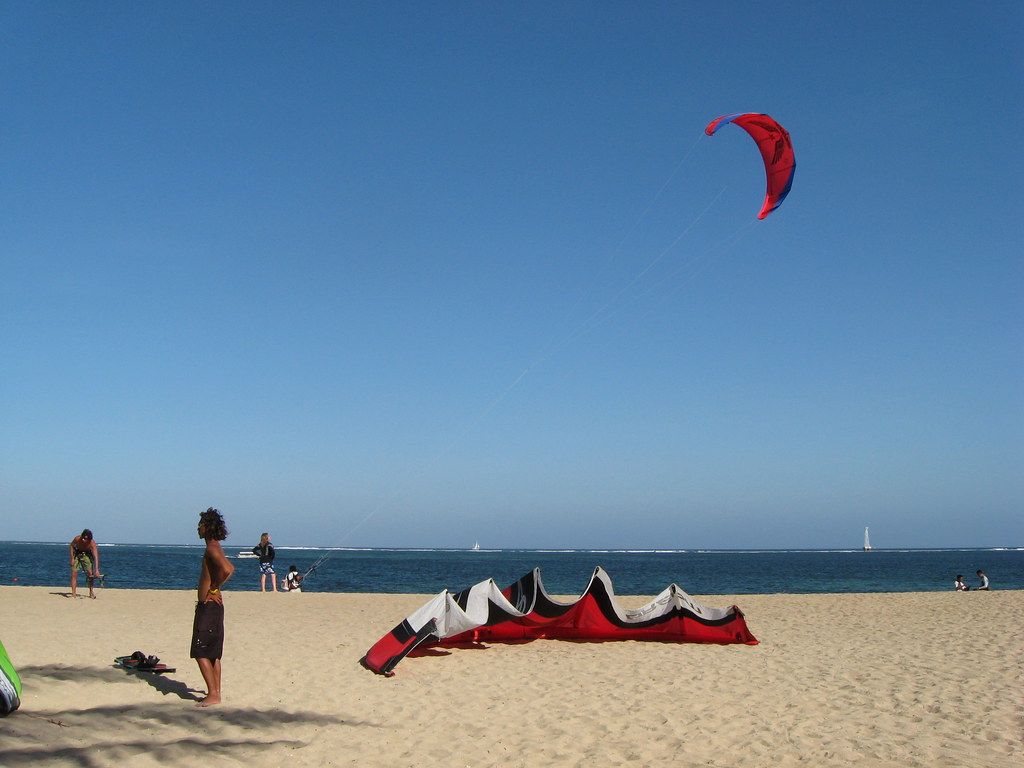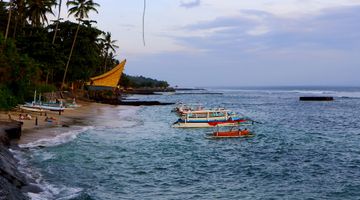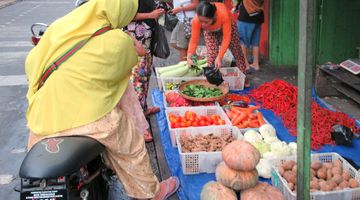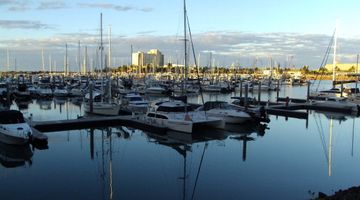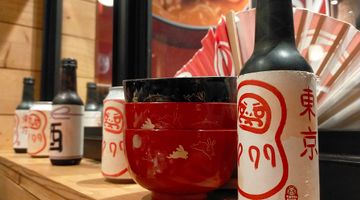Kuta Indonesia – Your Quick Travel Guide
In a nutshell
Historically, an old fishing village, Kuta is now known as being the centre of Indonesia’s tourism. With its plethora of beaches, resorts, night clubs, stand-still traffic jams and sheer colourful chaos, Kuta is nowadays a loud, flashy non-stop party destination that lures in visitors who enjoy bar-hopping by night and recovering on exotic beaches by day.
Why go to Kuta
For travellers who like being in the heart of the action and at the centre of a whirlwind of activity and pandemonium – Kuta might just be heaven on earth for you. The vibrant night life with its heady concoction of booming music, giant buckets of alcohol and club-hopping scene is heaving with neon-painted, shirtless foreigners from every corner of the earth.
Other reasons to visit Kuta include very inexpensive markets selling souvenirs of every kind, dirt-cheap accommodation and competitively priced restaurants and bars filled with travellers seeking the best spot for happy hour.
For those looking to steer clear of the party-centric atmosphere, or for those looking to recuperate after a rough night out, Kuta also offers surfing and yoga opportunities for travellers seeking a little bit of peace and quiet away from the roaring hullabaloo. With plenty of seaside cafes dotting the coastline of Kuta, travellers can also unwind with a cocktail and watch the sunsets from the comfort of a reclining chair or hammock after a day spent sunbathing at the beach or swimming in the resort’s palm-lined pool. For those seeking further daytime excitement, why not head over to Kuta’s waterpark, Waterbom Bali or check out Pandora Experience Bali for an entertaining and exciting escape game played in teams.
When to go to Kuta
The best time of year to visit Kuta would depend on what you’re looking for – energetic crowds or less energetic crowds. Seldom quiet, Kuta’s high-season is July, August, Easter holidays and over December’s festive season. The ideal time to visit is probably from April until September when the city is slightly quieter. Monsoon season is probably best avoided and occurs from October to April each year.
Where to stay in Kuta
With a smorgasbord of accommodation options in Kuta, travellers will be spoilt for choice when choosing a spot to crash for the night. Most accommodations are usually priced in the lower to mid-range price bracket. Private villas are harder to come by as a result of Kuta’s lack of space and somewhat crammed living quarters. With the low nightly rates, budget backpacker’s will have no difficultly sourcing a room at dirt-cheap prices. As with most things in life however, if it seems too good to be true, it probably is. Many budget accommodations in Kuta offer low standards and poor facilities; and it pays to insist on viewing the room before paying. For those who are simply after a bed for the night however, beds in Kuta are some of the cheapest in Bali. Fortunately Wi-Fi in Kuta is a standard and most of the resorts boast beautiful and picturesque swimming pools for their guests.
Where and what to eat in Kuta
With the abundance of inexpensive international food and scrumptious, local food everywhere in Kuta, even the picky-eaters will have full bellies and full wallets. With sandwiches, eggs benedict, pizzas and burgers catering to the large tourist crowd, Western food is very easy to come. For adventurous travellers looking to submerge themselves in Indonesia’s excellent culinary scene, Kuta is a fine place to do this. Be sure to sample Babi Guling (Balinese suckling pig) which is generally served with fragrant rice, vegetables and crispy pork skin. Rendang Sapi is also a local speciality of Indonesia which is a creamy, coconut cream and meat dish which should be on the must-try list of meat-eating visitors. Nasi goreng (fried rice) or nasi pecel (rice with vegetables, tofu and peanut sauce) are wonderful options for vegetarian travellers looking for delicious, local flavours that are nutritious and traditional.
Lastly, no visitor should leave without trying an iced Balinese Kopi (coffee) at one of the many coffee street vendors or small coffee shops in Kuta for an energising and refreshing drink while exploring the city’s hidden gems.
How to get around Kuta
Getting around the bustling city requires additional time as well as patience. Lots of patience. Traffic jams in Kuta go hand in hand and travellers should expect to sit in stand-still pile-ups for a significant amount of time while travelling around the city.
Taxis are available but with the meter being charged per minute it often makes more sense to walk the shorter distances and rent a motorbike and scooter for the longer ones. Hiring a scooter however, is only recommended for experienced drivers as road rules and regulations are in no way enforced in Kuta and the roads are something of a frenzied free-for-all.
How to get to and from Kuta
Being the busy tourist destination that it is, getting in and from Kuta is possible via pretty much all means of transport. Boat, bus, plane, taxi, bus or bemo (Bali’s open-aired minibus), the choice is yours.
By air
Directly south of Kuta lies Ngurah Rai International Airport, commonly known as Denpasar International Airport (DPS) which is 15 minutes away from the centre of Kuta via taxi. International and local flights are therefore popular and frequent to and from Kuta and for travellers short of time or with generous budgets air travel is ideal for exploring the country as a whole. Being Indonesia’s third busiest airport and a well-connected hub means that arriving from pretty much anywhere is relatively hassle-free.
Popular international airlines into Kuta include, Hong Kong Airlines, AirAsia, Cathay Pacific and Cebu Pacific Ari; and poplar local airlines are Garuda Airlines, Lion Air, Tiger Air and Citilink from Jakarta.
Upon arrival at the airport, a taxi ride into the heart of Kuta should cost around IDR 50,000. A bemo ride is also possible from the airport and will cost you about the same amount of Indonesian Rupiah.
By bus
As a result of Kuta’s transport hub status, Kuta is connected to all bus routes from every area in Bali and bus travel is affordable, largely reliable and frequent. A one and a half hour bus journey is possible from Ubud to Kuta and vice versa for around IDR 80,000 with buses leaving every hour from 8am to 10:25pm. Taxis for the same journey are also possible but at IDR 200,000 for the trip, are significantly pricier. Although if you are travelling in a small group this might actually work out more economical as a result of dividing the taxi fare.
Kura-Kura is a bus shuttle company that operates daily in Bali’s most popular tourist areas. With its affordable tickets, reliability, and various ticket passes available; Kura-Kura comes highly recommended for travellers wishing to explore Bali’s surrounds.
By car
Kuta can also be reached via car by the main Jalan Ngurah Rai bypass from places up north such as Denpasar, Ubud and Sanur; as well as places down south, such as, Uluwatu, Nusa Dua and Jimbaran.
For travellers looking to travel to the Gili Islands, Lombok and Nusa Lembongan from Kuta; speedboats and ferries ply the waters to and from these popular tourist destinations repeatedly throughout the day from Benoa Harbour 20 minutes northeast of Kuta.
Is Kuta a safe place to visit?
Pickpocketing and tourist scams are sadly just a few of the symptoms that arise as a result of Kuta being as popular, overcrowded and congested as it is. Travellers should be mindful of their belongings, not carry around valuables or an excess of cash, and be cautious of the locals that they may meet while out at night.
Unfortunately, drunken driving and drunken swimming are also dangerous activities that Kuta sees all too often. Be kind, cautious and careful out there, fellow travellers.

